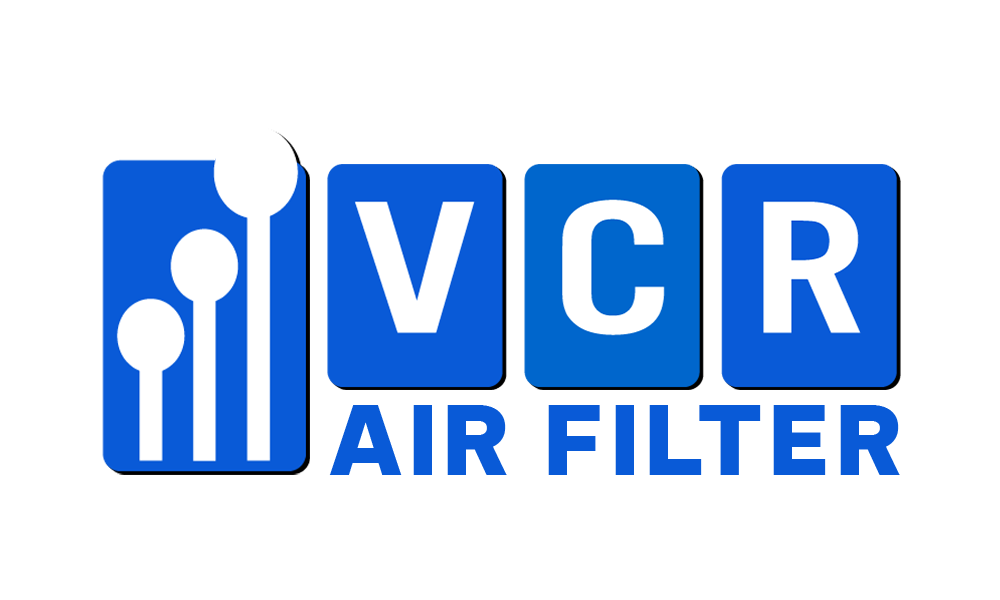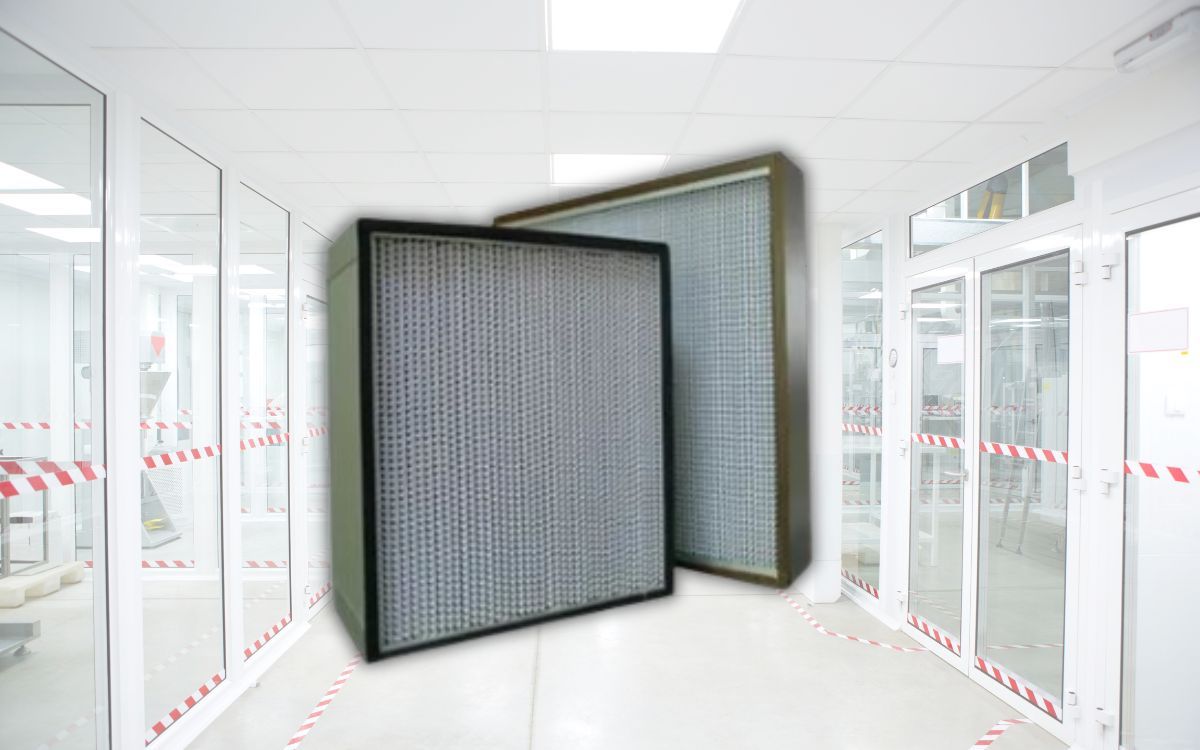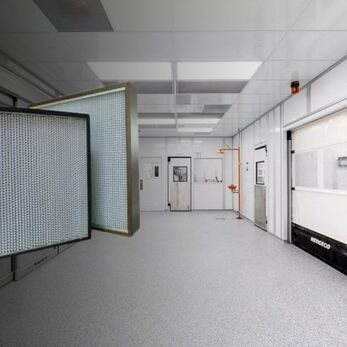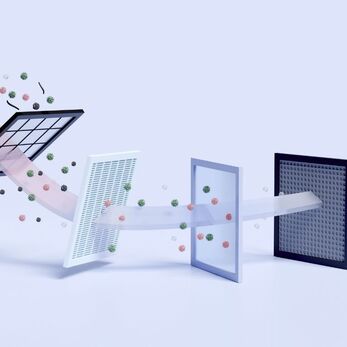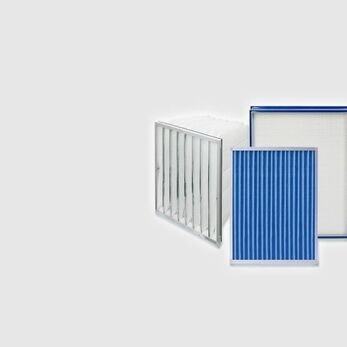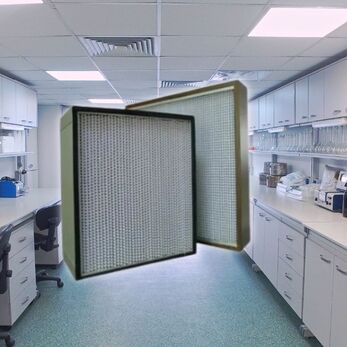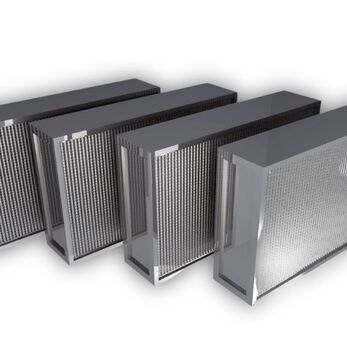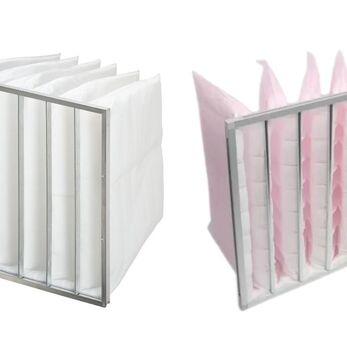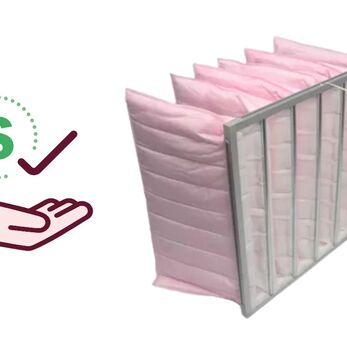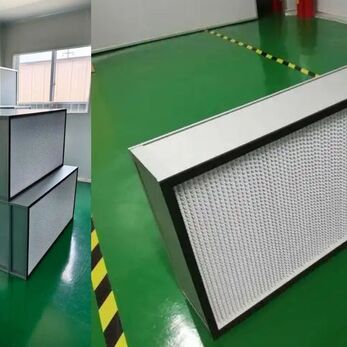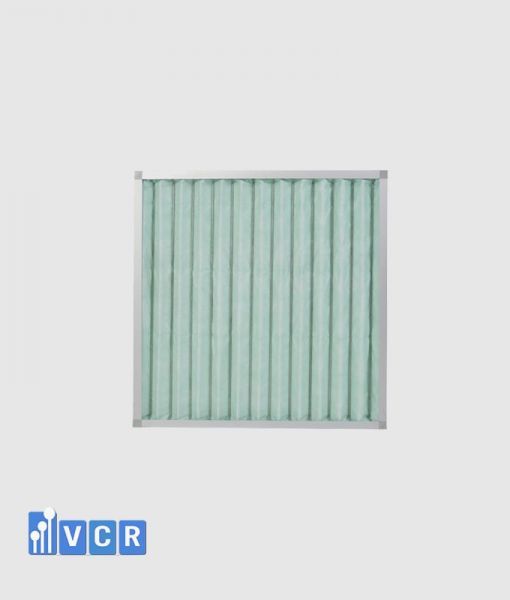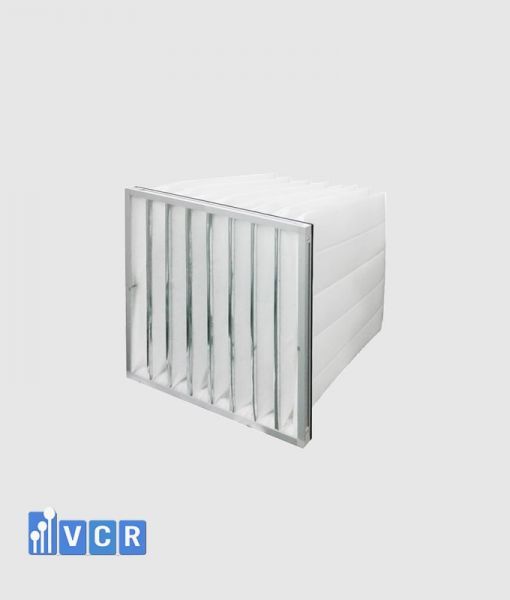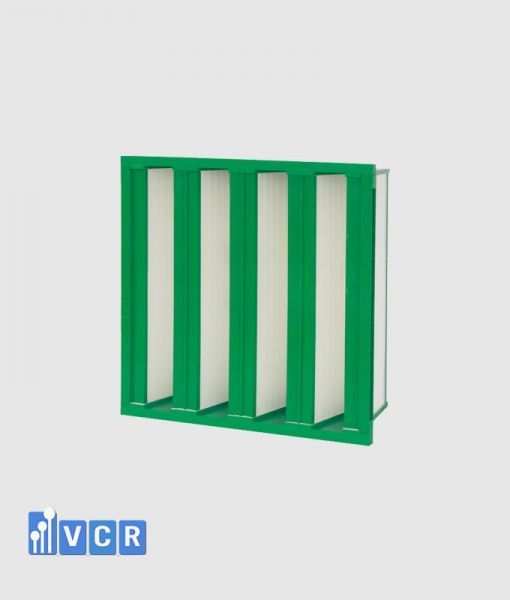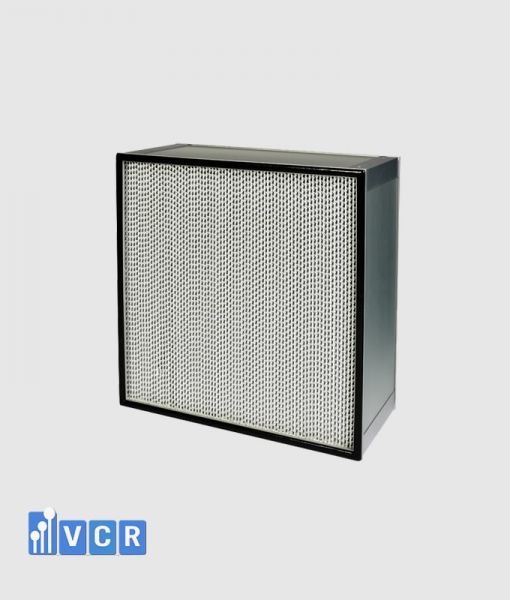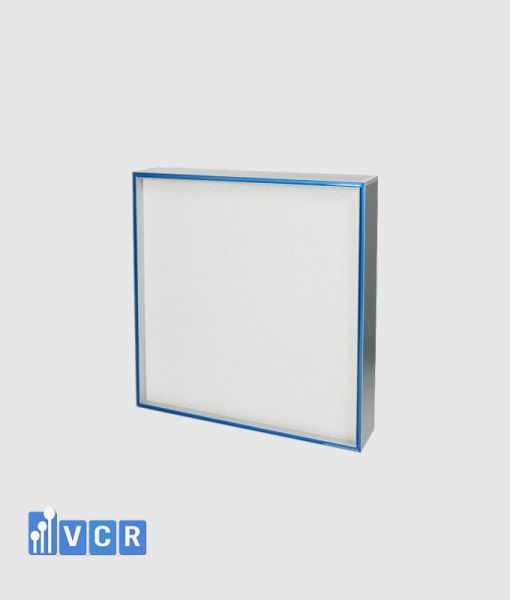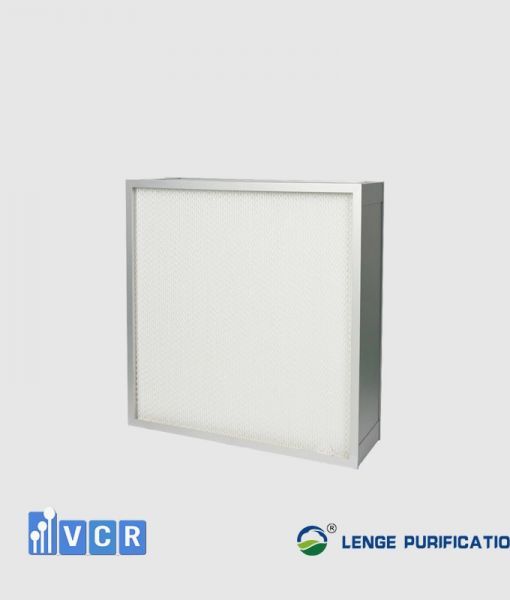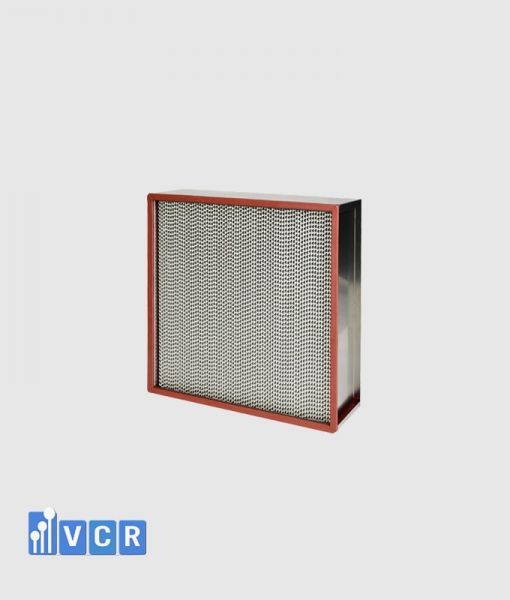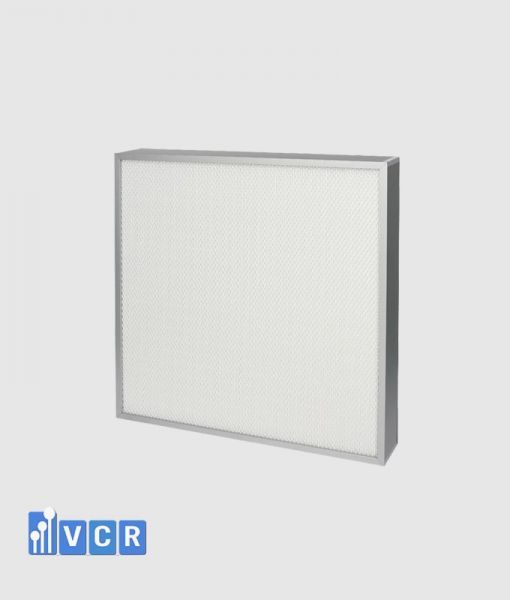In cleanroom systems, HEPA H13 and H14 are two filter levels according to EN 1822 standards with efficiencies of 99.95% and 99.995% respectively. Understanding the “Important Differences in Manufacturing of HEPA H13 and H14 Filters” helps ensure HVAC design meets ISO/GMP standards and maintains an optimal clean environment.
- 1. Why Is It Important to Understand the Difference Between HEPA H13 and H14?
- 2. Quick Comparison: HEPA H13 vs. H14 Technical Specifications
- 3. When Should You Use HEPA H13 vs. H14?
- 4. Common Mistakes When Choosing HEPA Filters
- 5. Recommendations for Choosing the Right HEPA Filter
- 6. Frequently Asked Questions
- 7. Need Help Choosing the Right HEPA H13 or H14 Filter? Contact VCR Today
1. Why Is It Important to Understand the Difference Between HEPA H13 and H14?
In highly controlled production environments such as pharmaceutical manufacturing, microelectronics, high-end food processing, or GMP-compliant cosmetics, HEPA filters are not just auxiliary components — they are the final barrier protecting products from invisible contamination.
The two most common filtration levels used in air systems today are HEPA H13 and HEPA H14, both certified under EN 1822. However, many users fail to distinguish between them:
- H13 filters 99.95% of ultra-fine particles at 0.3µm
- H14 filters up to 99.995% — meaning it is 10 times more effective in terms of particle leakage rate
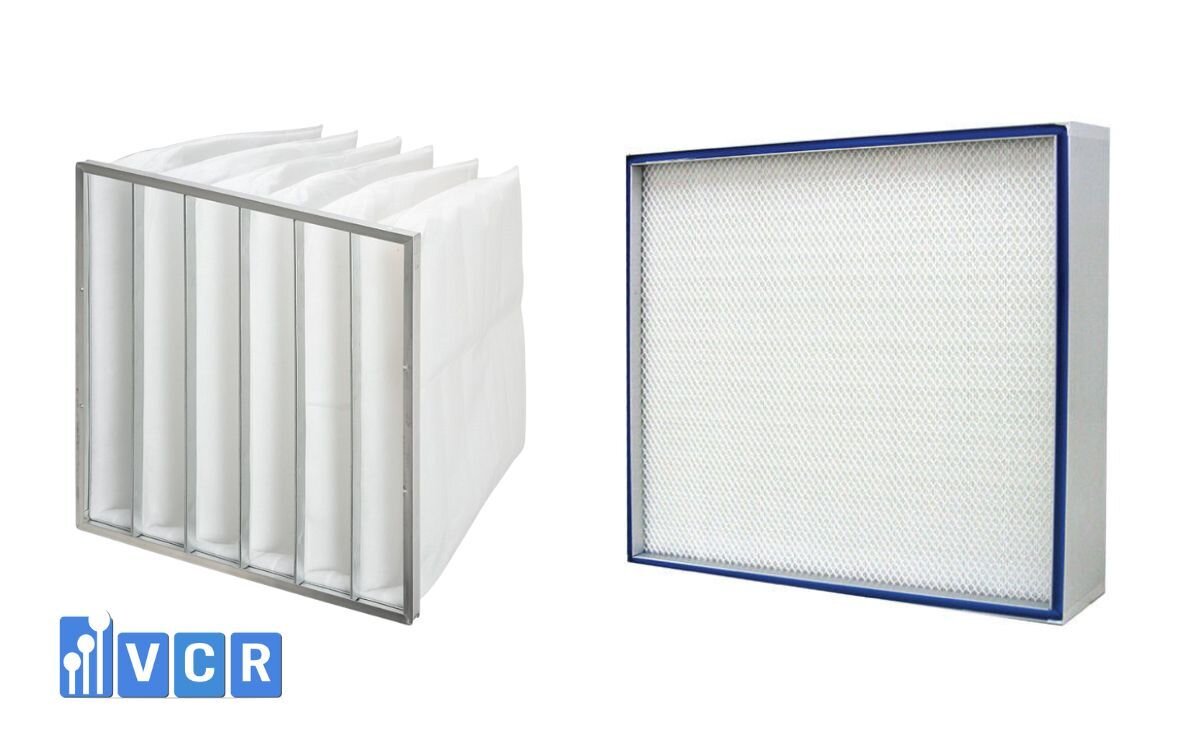
Misunderstanding or misapplying H13 vs. H14 can result in serious consequences in HVAC system design:
- Installing the wrong filter → cleanroom fails to meet ISO/GMP requirements
- Inability to obtain quality certifications during audits
- Increased risk of cross-contamination → costly revalidation of the entire system
Therefore, understanding the distinction between these HEPA types is the first step toward building a compliant cleanroom — not only to “meet requirements” but to ensure long-term operational efficiency.
2. Quick Comparison: HEPA H13 vs. H14 Technical Specifications
Although both HEPA H13 and H14 are classified under the high-efficiency range of EN 1822, they differ significantly in performance and application scope. The table below summarizes the key technical specifications:
|
Criteria |
HEPA H13 |
HEPA H14 |
|
Filtration Efficiency (MPPS) |
≥ 99.95% |
≥ 99.995% |
|
Particle Retention (0.3µm) |
Max 5 per 10,000 particles penetrate |
Max 5 per 100,000 particles penetrate |
|
Common Applications |
ISO Class 7-8 cleanrooms, HVAC for food & cosmetics |
ISO Class 5-6 cleanrooms, GMP pharmaceuticals, microelectronics |
|
Cost of Investment |
Moderate |
Approximately 15-30% higher than H13 |
Important Note:
While the 0.045% difference in efficiency may seem minor on paper, in real-world production it determines whether your cleanroom can meet ISO 5 or 6 standards — directly impacting product quality and compliance.
See more: Latest price list of Heat-resistant HEPA filters used in Cosmetic factories
3. When Should You Use HEPA H13 vs. H14?
Choosing between HEPA H13 and H14 should not be based on cost or assumption, but on the cleanliness level required for each specific area within the facility. Below are practical usage guidelines:
Use HEPA H13 when:
- Food or cosmetics plants without strict sterility requirements
Suitable for outer packaging, pre-processing, or areas where the product is not directly exposed. - Changing rooms, hallways, low-grade airlocks
Buffer zones that do not require ISO 6 or higher classification. - Cost-conscious HVAC systems
When high filtration isn't necessary but basic dust and microbial control is still required.
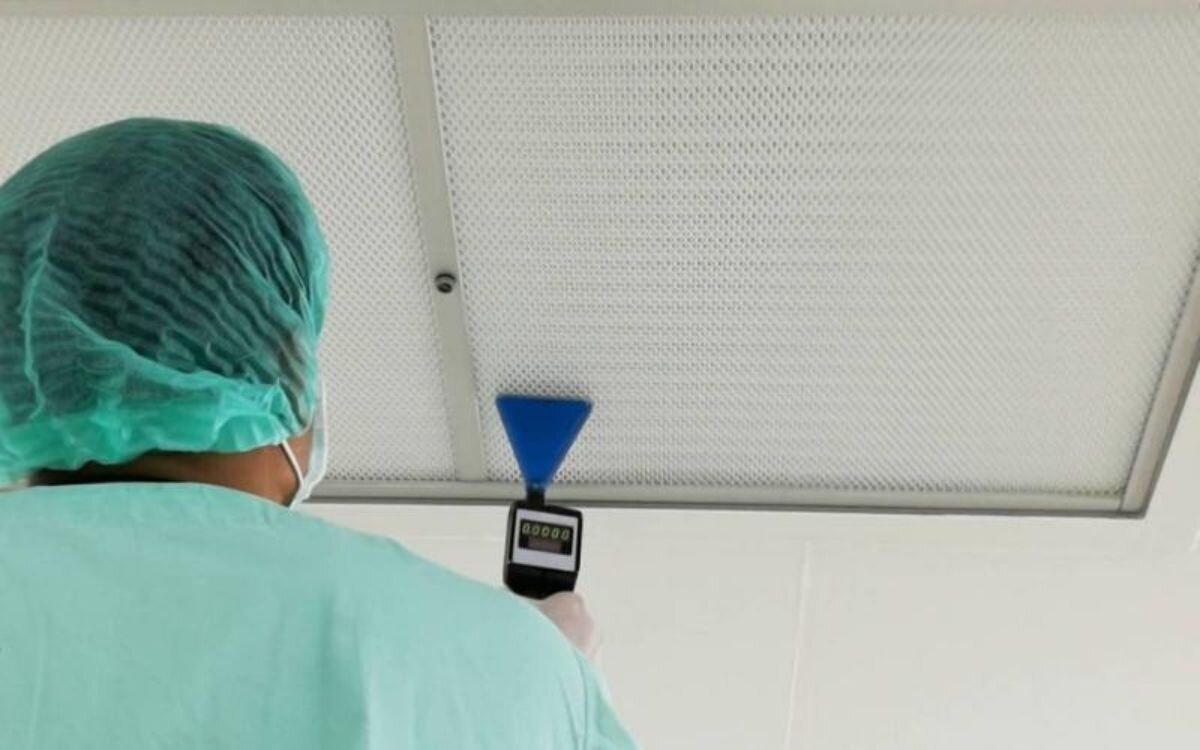
HEPA H14 is mandatory when:
- Pharmaceutical plants under EU-GMP or PIC/S
Especially in critical areas like injectable drug manufacturing or antibiotics. - Weighing rooms, sterile packaging, aseptic areas
High-risk zones where contamination must be strictly avoided. - Microelectronics or ISO Class 5-6 cleanrooms
Environments requiring near-total removal of sub-micron particles.
See more: Latest price list of HEPA filters used in food factories
4. Common Mistakes When Choosing HEPA Filters
Selecting the wrong HEPA grade or using it improperly can result in a cleanroom that appears compliant but fails actual standards. Here are three critical mistakes factories often make:
- Choosing based on price instead of standards
Many facilities opt for H13 instead of H14 because it's 20-30% cheaper, without considering the actual cleanliness level required for each area.
Consequence: Fails to meet ISO 5 or EU-GMP → rejected during audits. - Not verifying filtration certification
A compliant HEPA filter must be accompanied by a test certificate for MPPS (Most Penetrating Particle Size), based on EN 1822. Many filters are labeled “H14” but lack certification.
Consequence: Installed filters may still need to be replaced due to failure in DOP testing. - Skipping maintenance or timely replacement
Even H14 filters lose efficiency if clogged, leaking, or operating under incorrect airflow. Some facilities only replace filters when “visible dust appears” — despite 0.3µm particles being invisible to the naked eye.
Consequence: Increased pressure drop - reduced filtration efficiency - impacts entire production line.
5. Recommendations for Choosing the Right HEPA Filter
Choosing the correct HEPA filter not only ensures air quality but also helps your facility pass GMP/ISO audits more easily. Below are three key principles to follow:
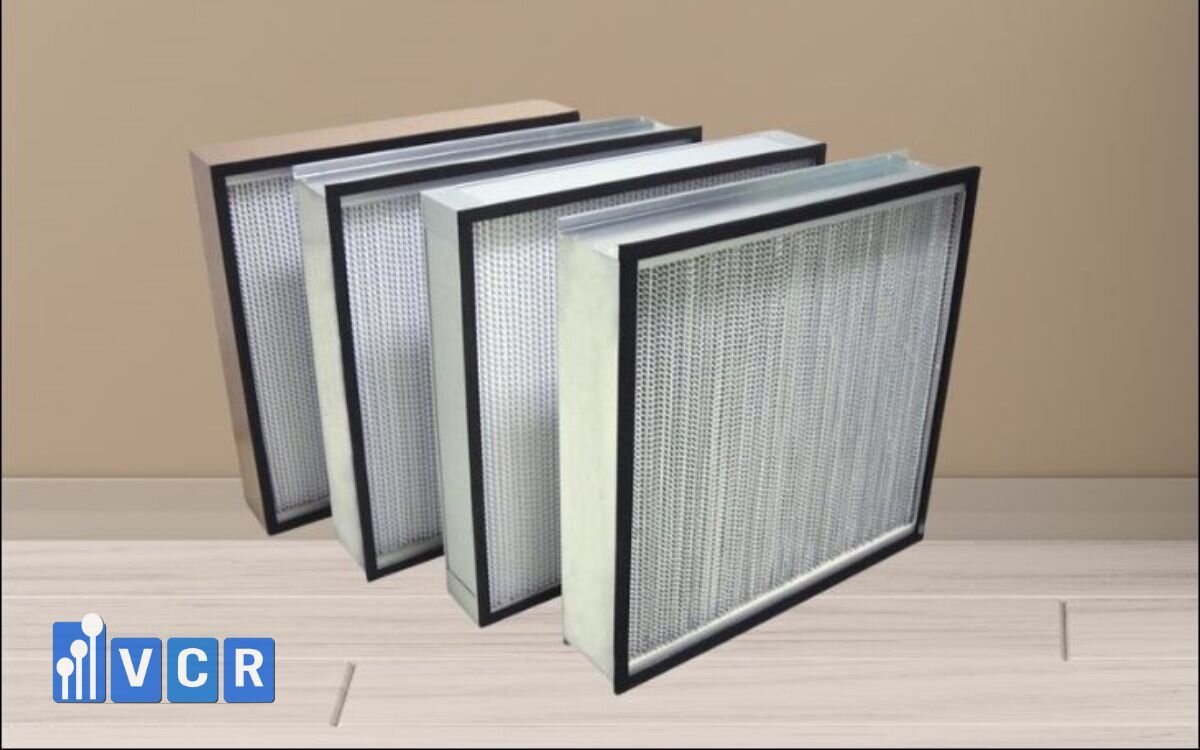
- Always require EN 1822 certification
A compliant HEPA filter must include a test report for MPPS performance — issued by the manufacturer or an independent lab.
Required certificates: EN 1822-4, EN 1822-5, with a unique ID for each filter unit.
No certification = Not acceptable for GMP-compliant systems. - Choose suppliers with on-site testing and validation services
A reliable supplier doesn’t just deliver the filter — they also provide:
- On-site DOP testing after installation
- Leak and airflow uniformity checks
- Full documentation for GMP/ISO audit compliance
This minimizes risks during cleanroom validation or third-party inspection.
- For pharmaceutical plants - use HEPA Boxes with integrated H14 filters
HEPA Boxes with built-in H14 filters and DOP ports are highly recommended for sterile areas such as weighing rooms and aseptic packaging.
Advantages:
- Modular and standardized design
- Easier to test and replace
- Optimized airflow for ISO 5-6 zones
6. Frequently Asked Questions
Can H14 be replaced with H13 to save costs?
No. In high-sterility zones such as weighing rooms or injectable packaging areas, using H13 instead of H14 may result in non-compliance with GMP — especially during EU-GMP or PIC/S inspections.
H14 offers 10 times greater efficiency than H13 in filtering ultra-fine particles — a difference that is non-negotiable, regardless of budget.
Is post-installation filtration performance testing required?
Yes. Whether you install H13 or H14, all HEPA filters must undergo DOP testing (Dispersed Oil Particulate) before commissioning.
This is a mandatory step in most pharmaceutical, food, and cosmetics factories seeking GMP/ISO 14644 certification.
Do H13 and H14 filters have the same lifespan?
Not exactly. Filter lifespan depends on:
- Dust levels in the intake air
- Operating frequency and airflow volume
- Maintenance schedule and use of pre-filters
However, H14 filters are typically replaced sooner because they are used in ultra-clean environments and clog faster if upstream filtration isn’t well-managed.
7. Need Help Choosing the Right HEPA H13 or H14 Filter? Contact VCR Today
Choosing the wrong HEPA filter can cause your cleanroom to fail ISO standards or be rejected in GMP audits, even if you’ve invested heavily in HVAC systems.
Don’t let a small mistake lead to costly consequences.
VCR - Vietnam’s cleanroom equipment expert - is ready to support you:
- Expert consultation for filter selection by zone: weighing rooms, airlocks, sterile zones...
- Supply of certified HEPA H13/H14 filters compliant with EN 1822
- On-site DOP testing and full validation support
Hotline: 090.123.9008
Email: [email protected]
Website: https://airfilter.vn/
Diep VCR


